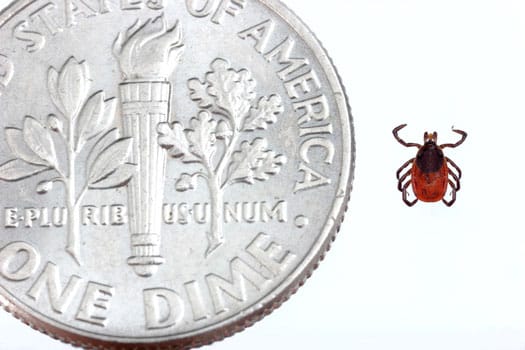Click To Call > (800) 966-7673
Friday, May 20, 2022
As the temperatures increase, so does the resurgence of one of Mother Nature’s most pesky creations: ticks. Known to live in tall grass and wooded areas, several species of ticks, including the Lyme disease-spreading Blacklegged ticks, can pose a threat to homeowners, campers and outdoor adventurers alike. Rose Pest Solutions offers tick treatments designed to lessen the tick problem on your property so you can relax and enjoy your summer.

“Every year in the U.S., ticks transmit more life-altering diseases, like Lyme disease, to people than any other biting pests,” said Mark VanderWerp, Manager of Education and Training for Rose Pest Solutions. “Tick awareness is the first, most important step to preventing tick-borne diseases, which are especially prevalent in children.”
There are over 20 known tick species in the Midwest. The five most common ticks found in Michigan, Ohio and Indiana are the American dog tick (wood tick), Blacklegged tick (deer tick), Lone Star tick, Woodchuck tick and the Brown dog tick (kennel tick). Of those, the Blacklegged tick (deer tick) is the species that carry Lyme Disease.
Anyone can be bitten by a tick and is at risk of contracting Lyme Disease. Lyme Disease has become more prevalent across the country, especially in the Midwest. The most common symptoms of Lyme disease are hives, fever, headaches, and fatigue at first, but if not treated, it can damage joints, the heart, and the nervous system.
Ticks are difficult to detect and even more frustrating to eliminate. Rose Pest Solutions offers the following to help homeowners and outdoor enthusiasts identify, prevent and properly treat ticks:
For homeowners looking to eradicate ticks from their property, Rose Pest Solutions offers barrier treatment services that focus on weed lines, edges of wooded areas or other spots in which the arachnids can flourish.